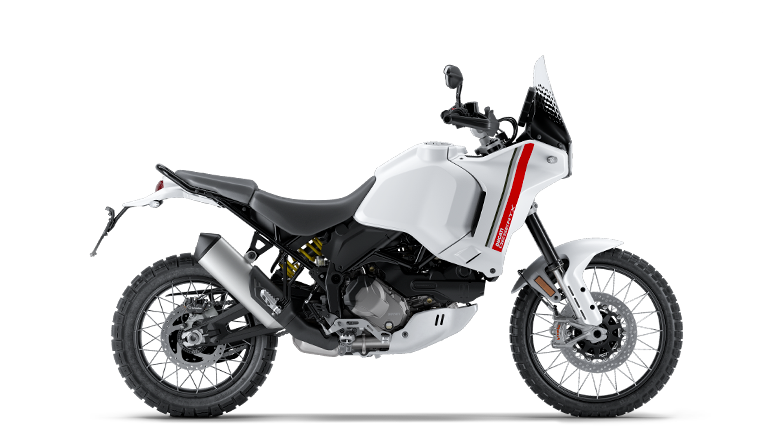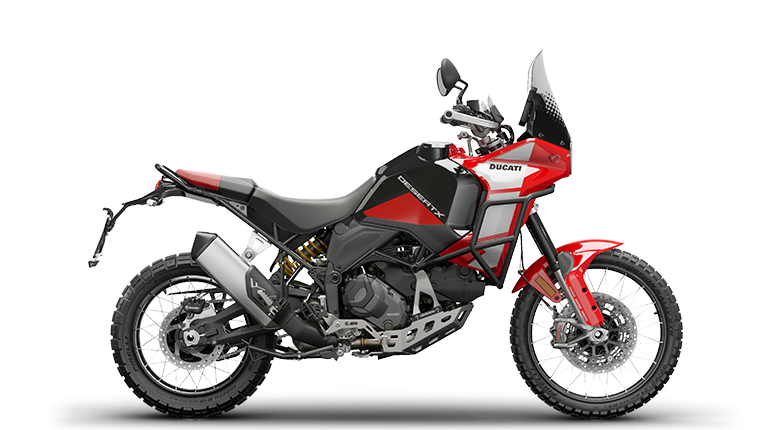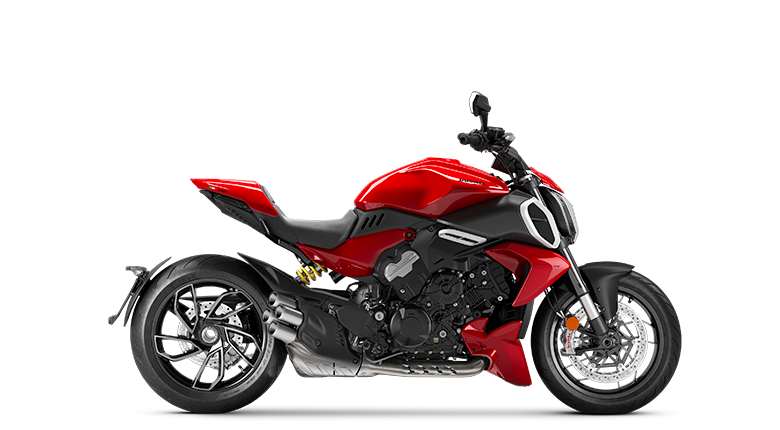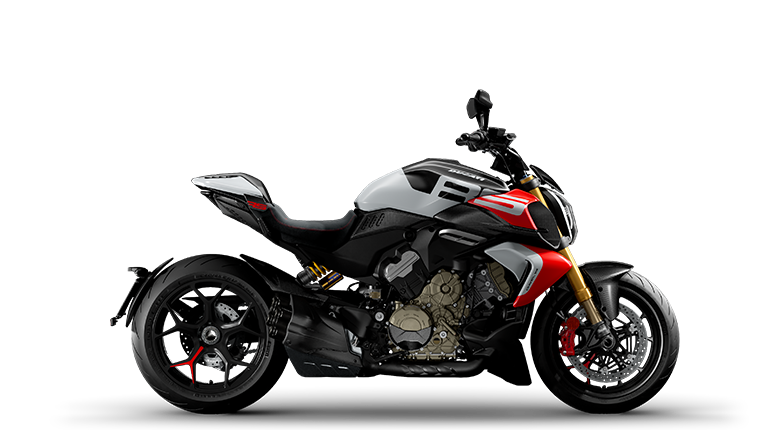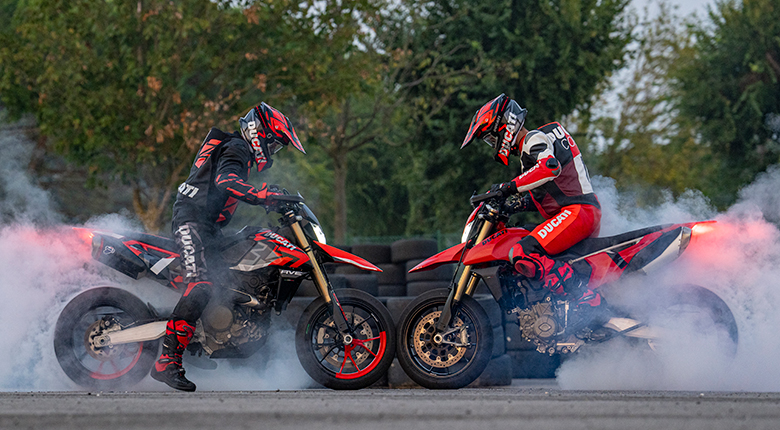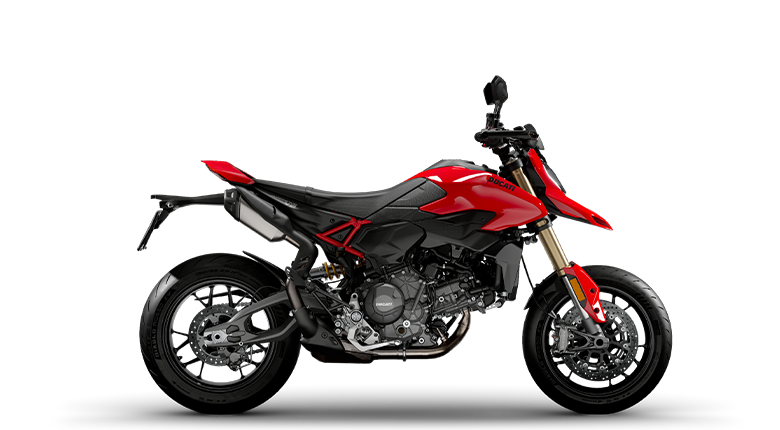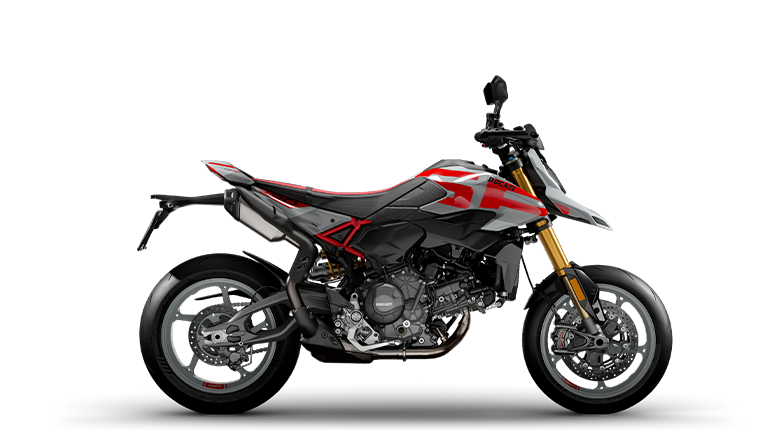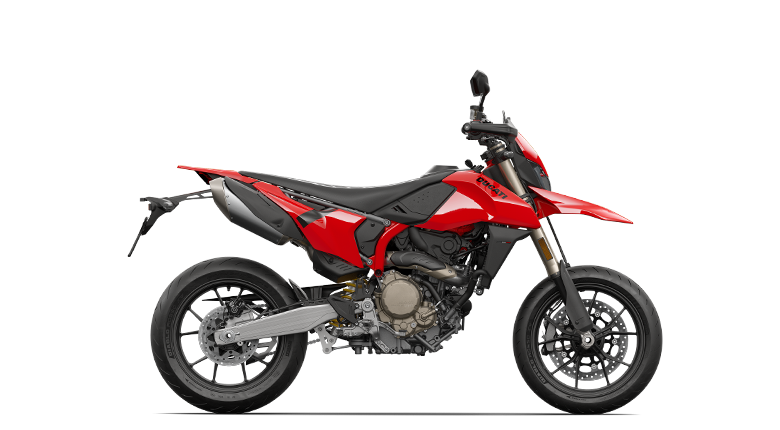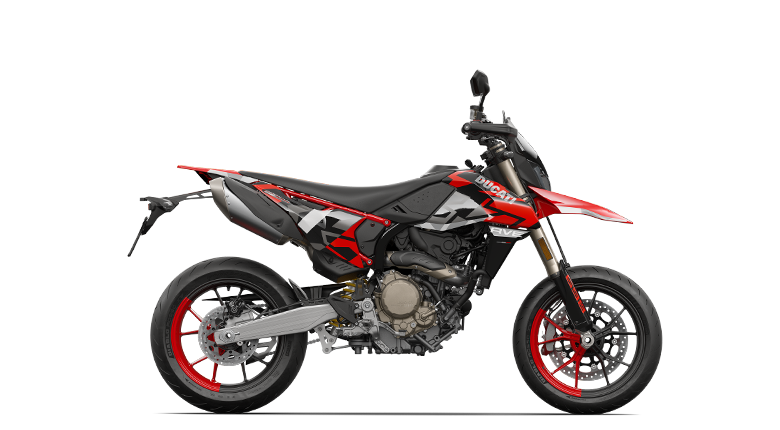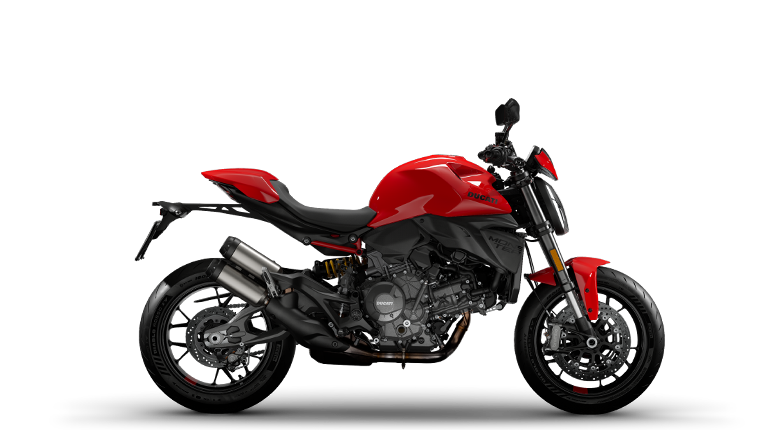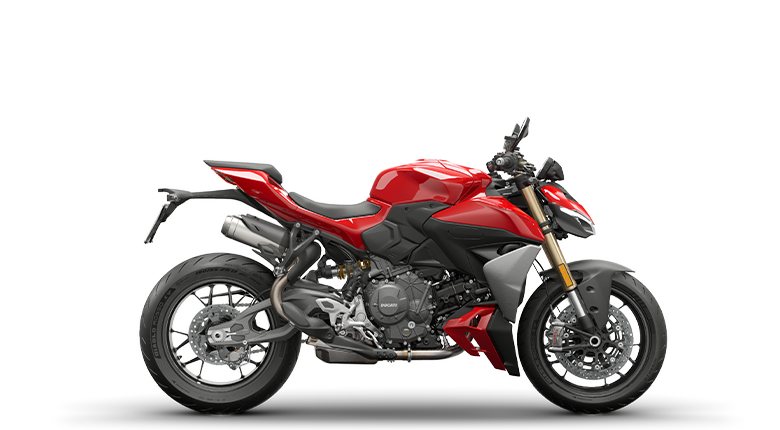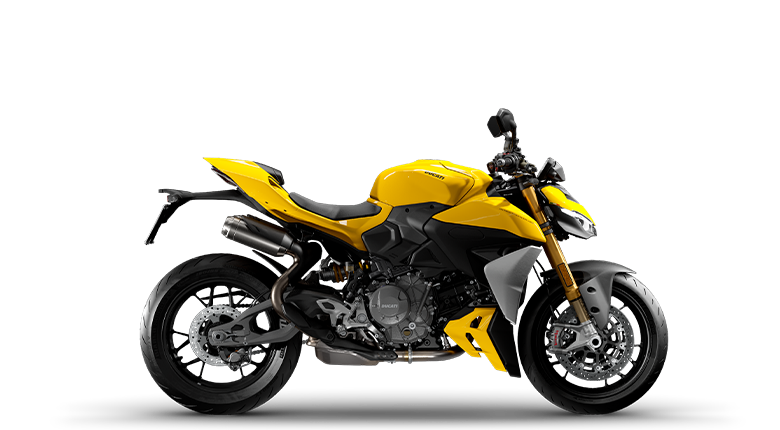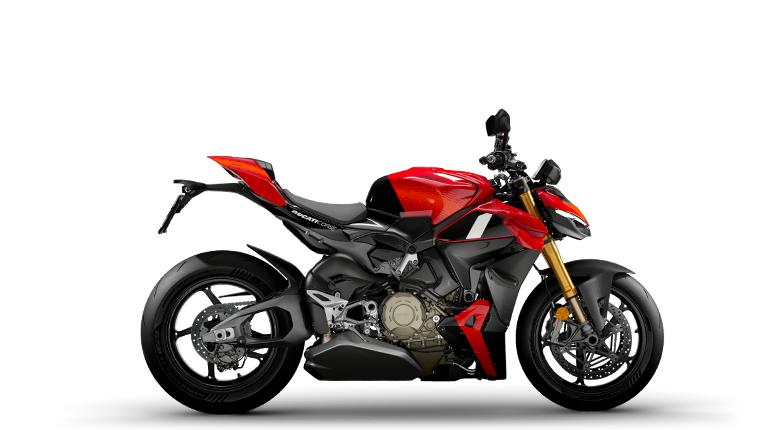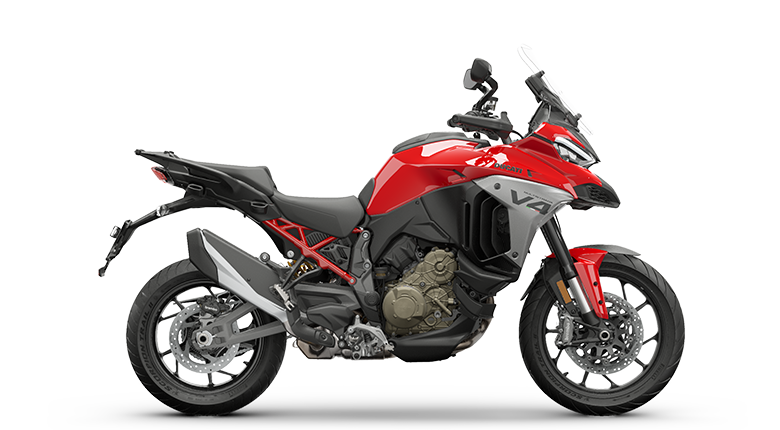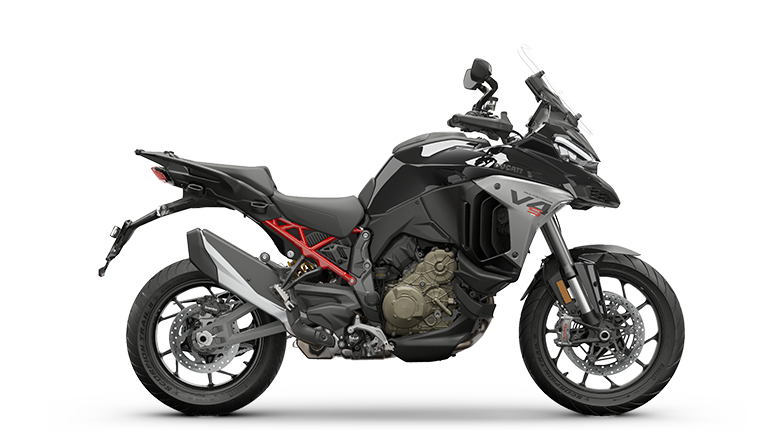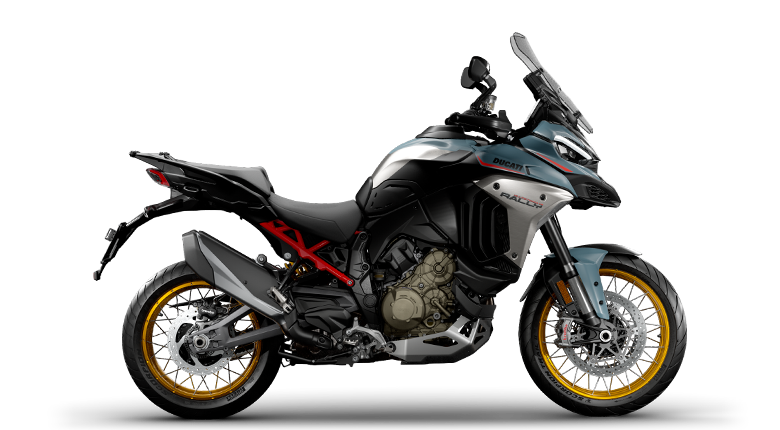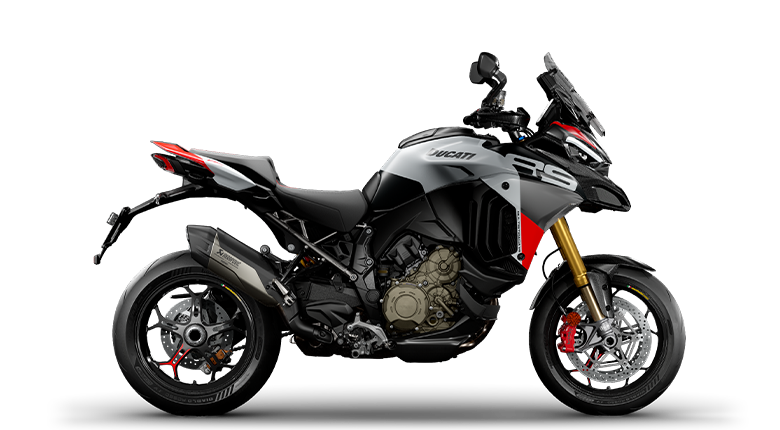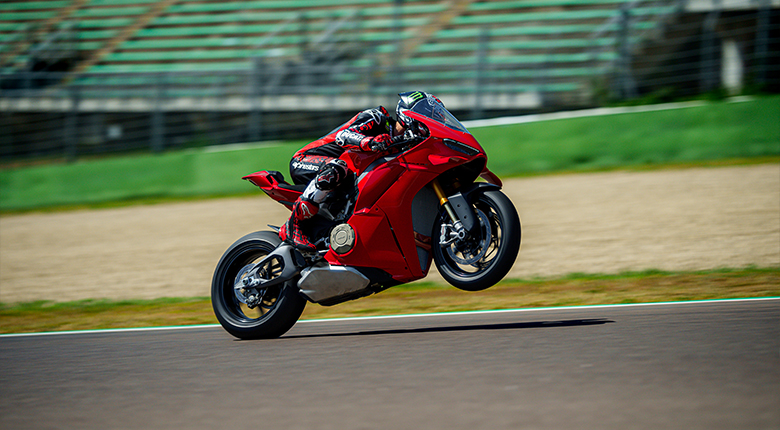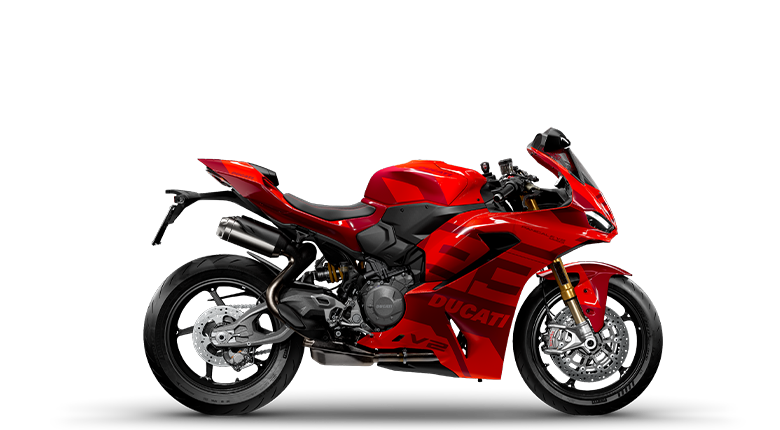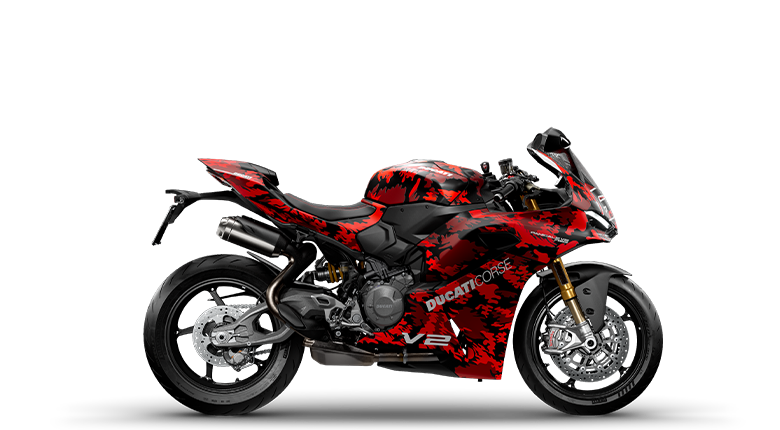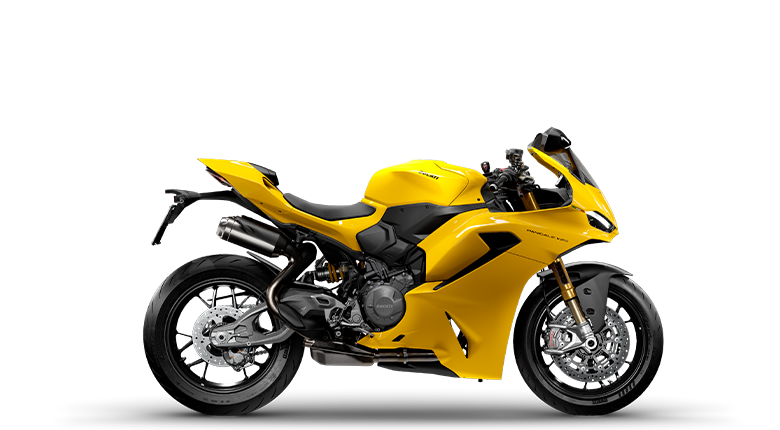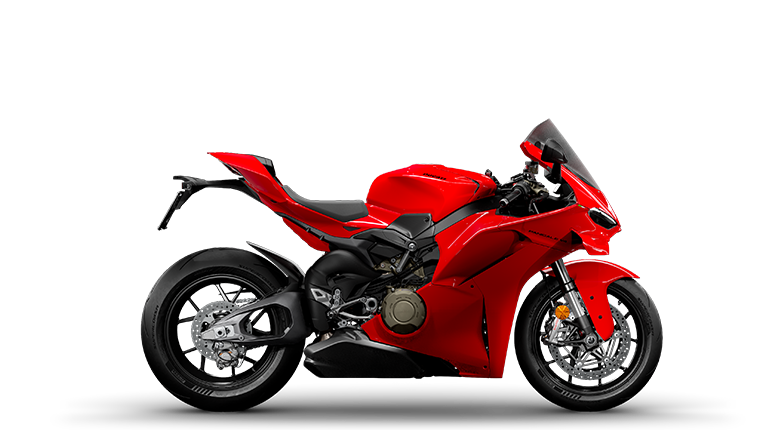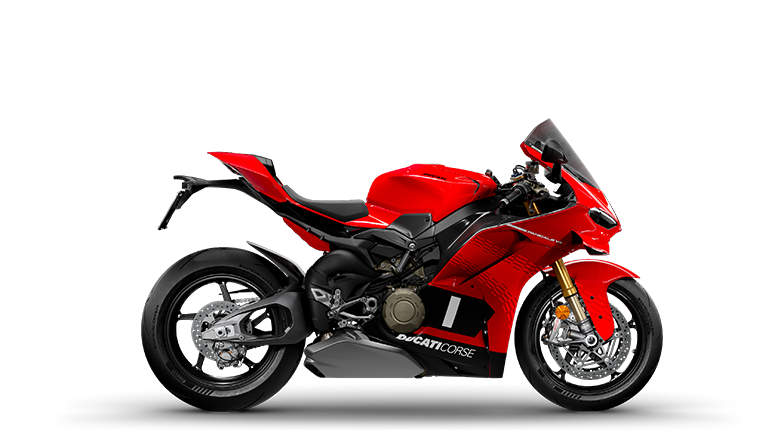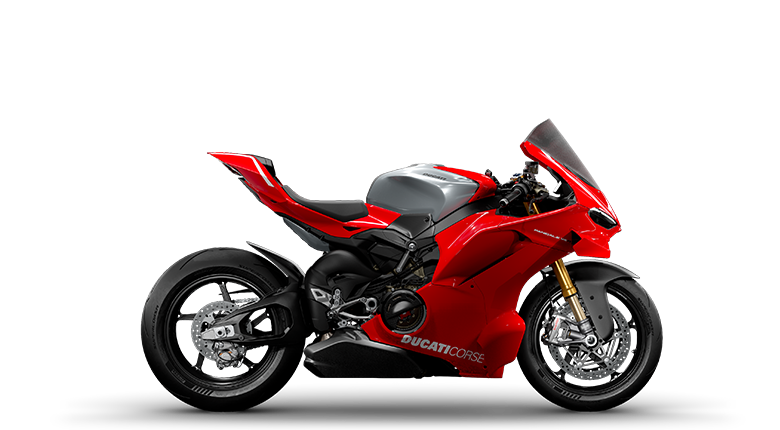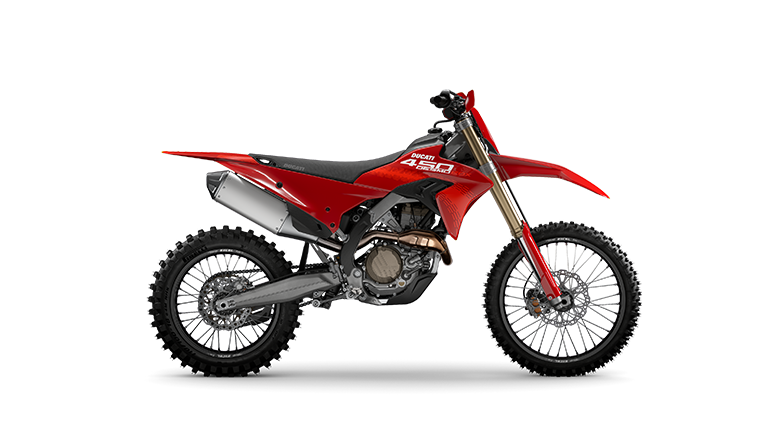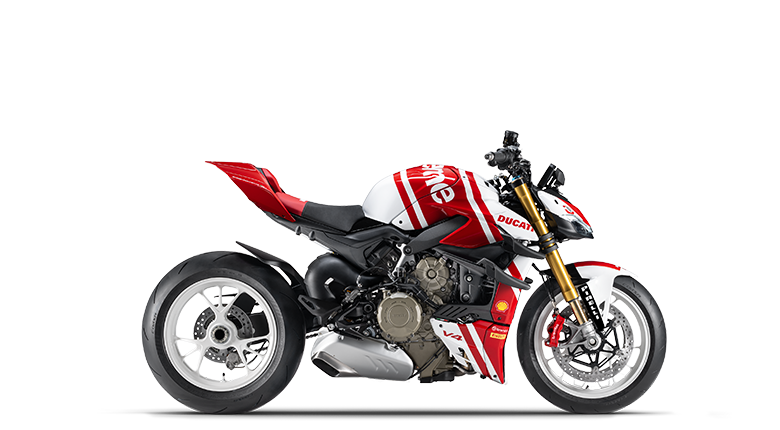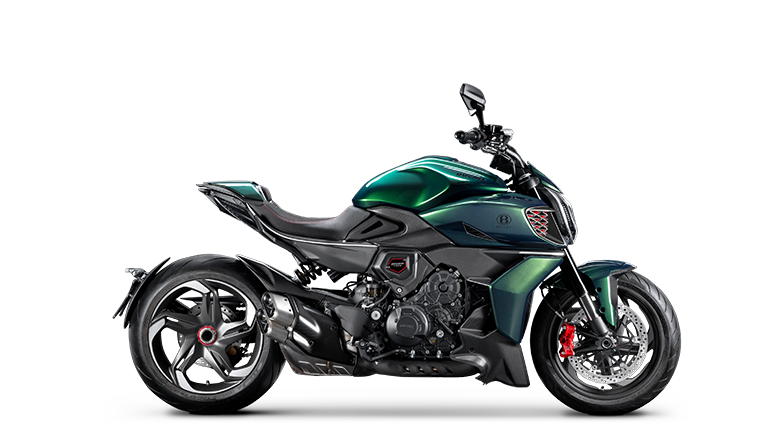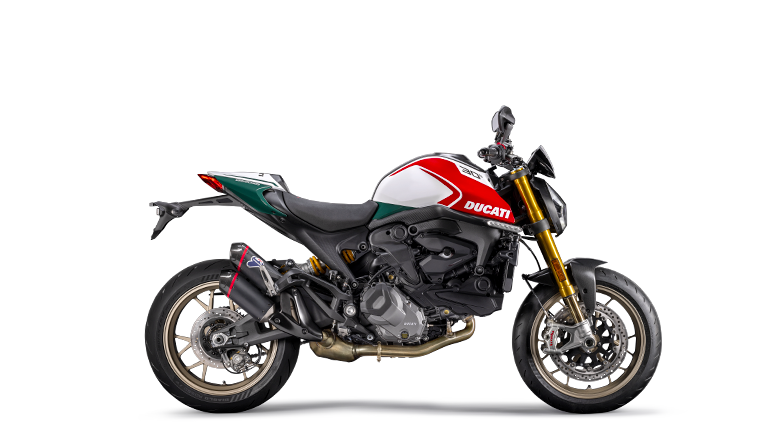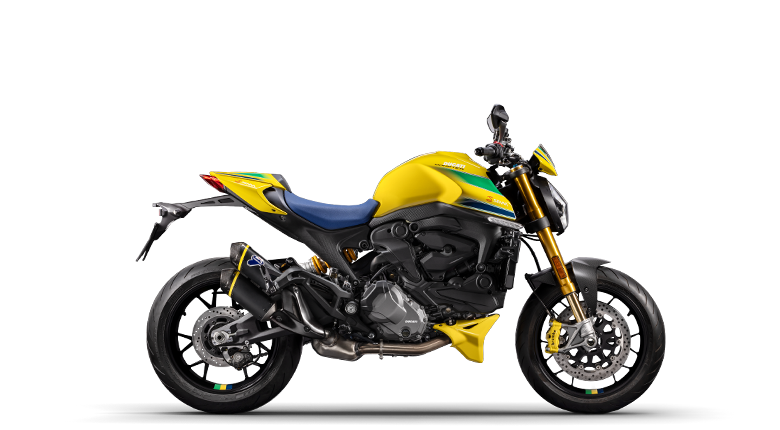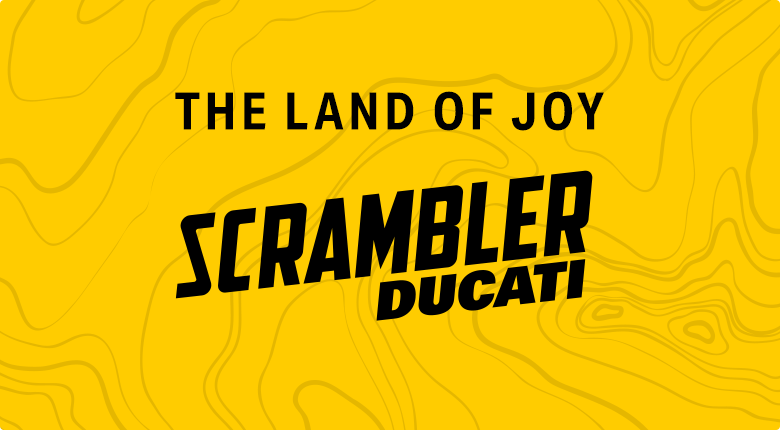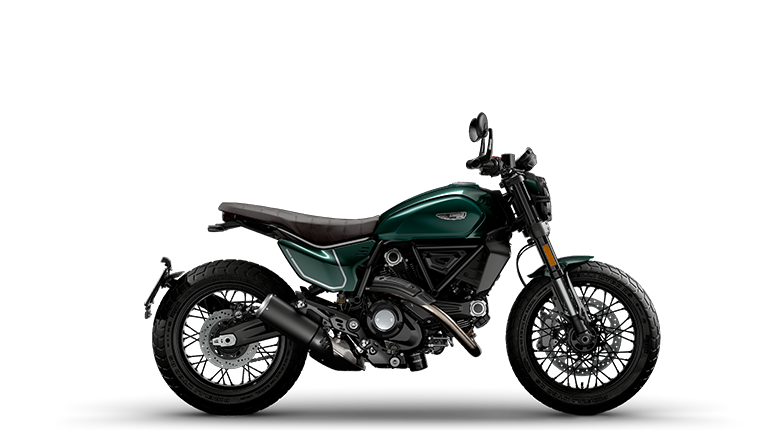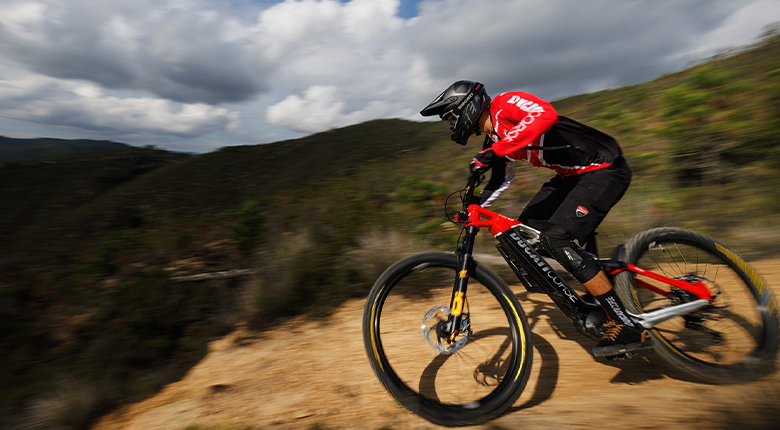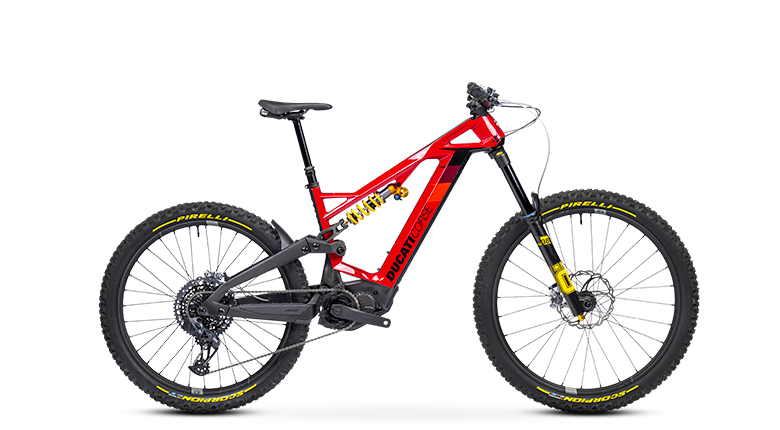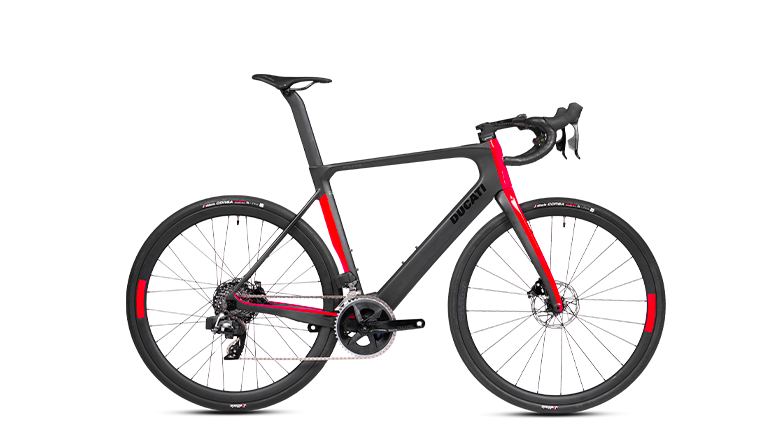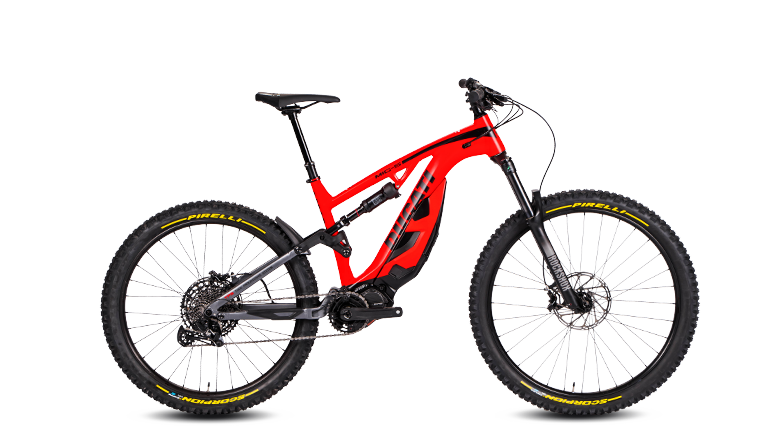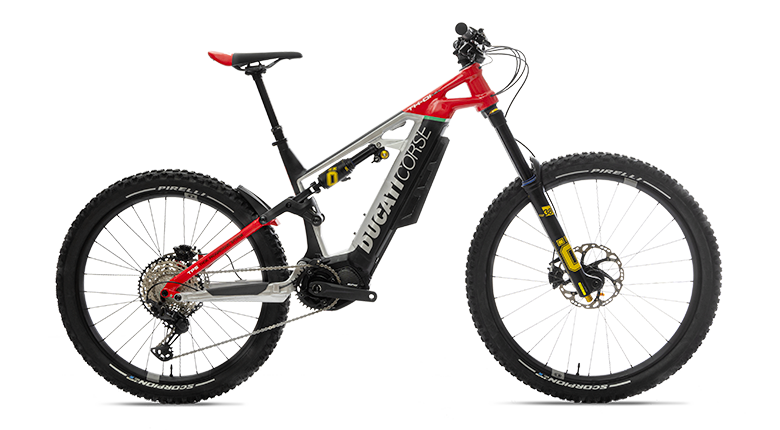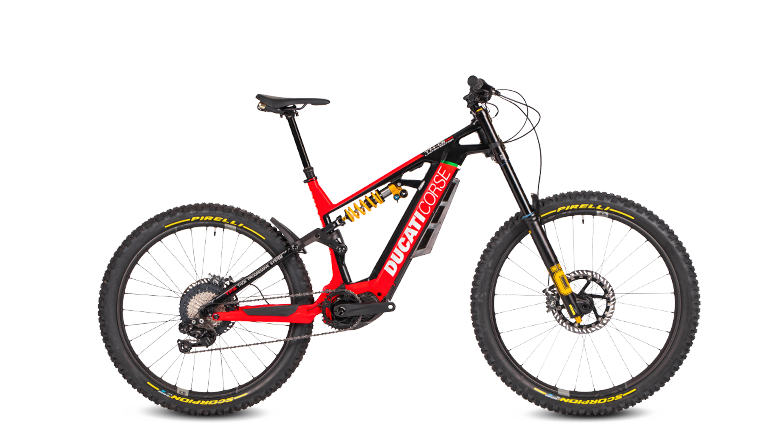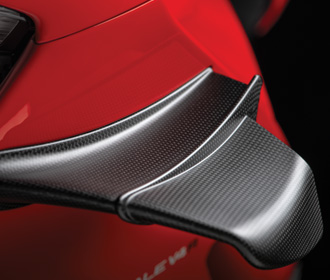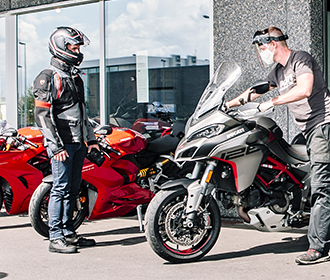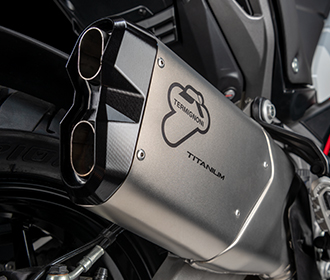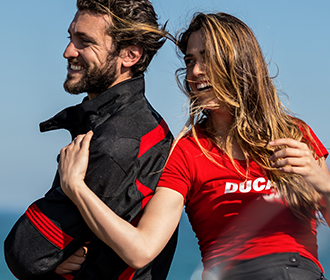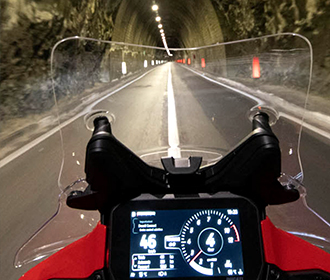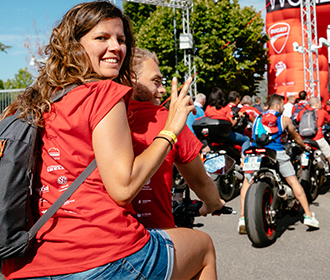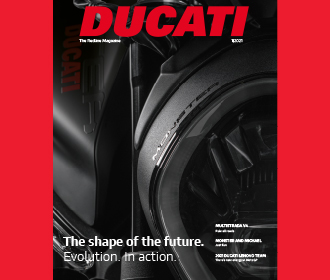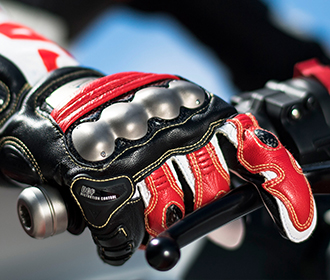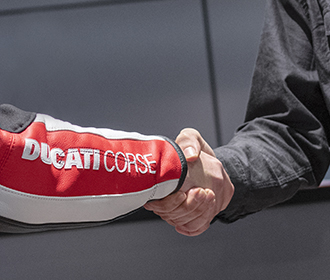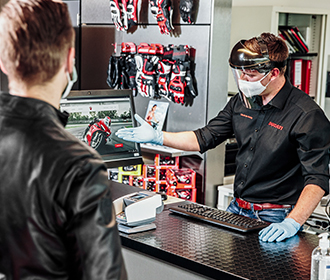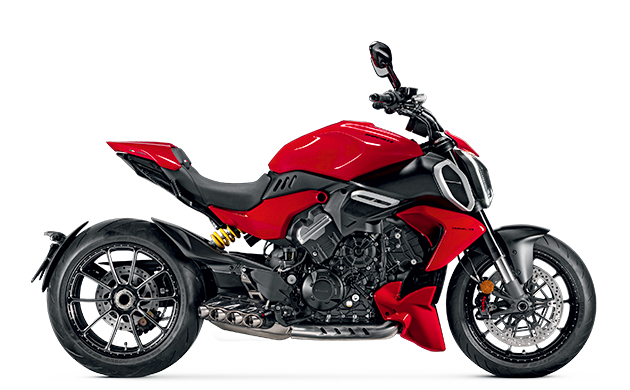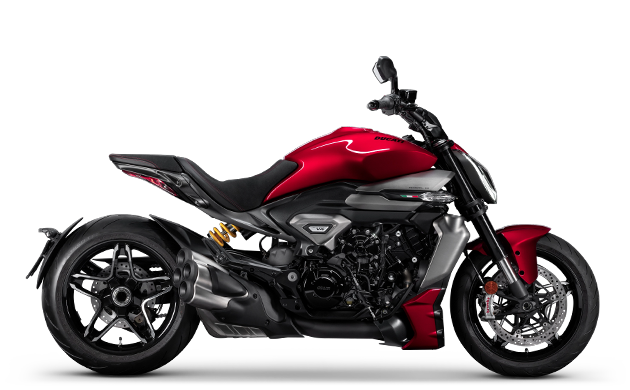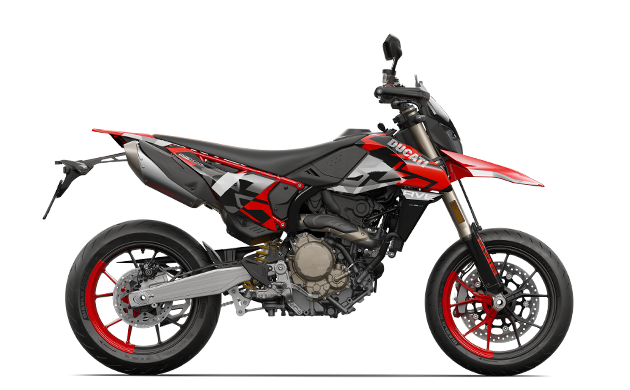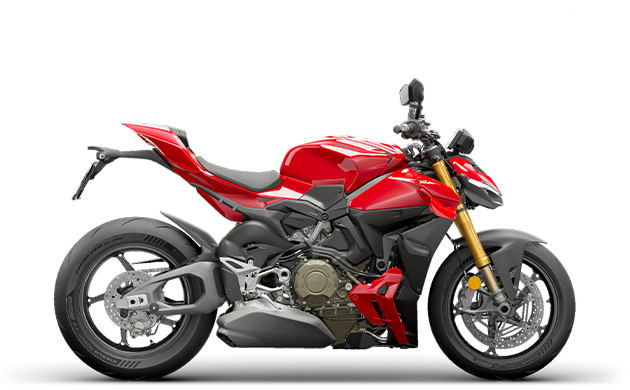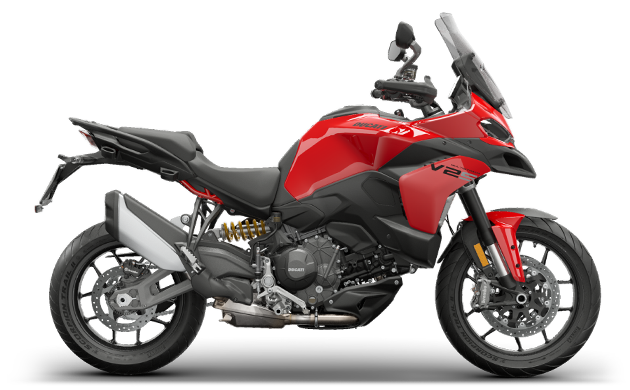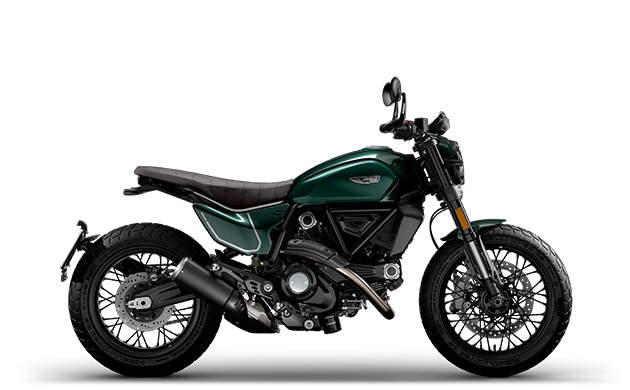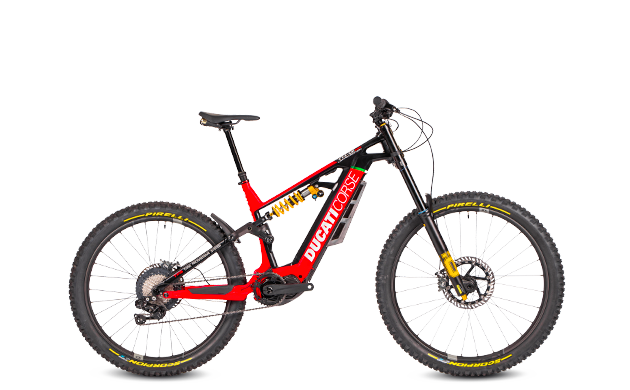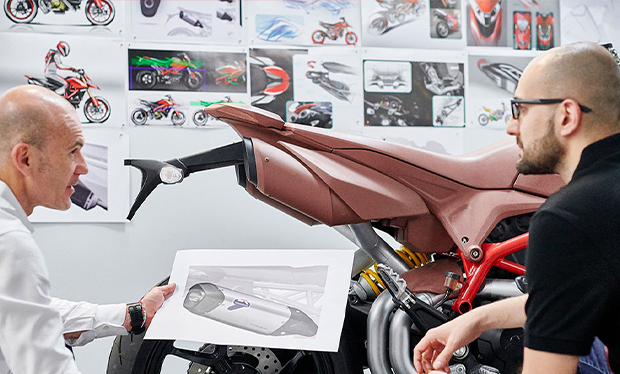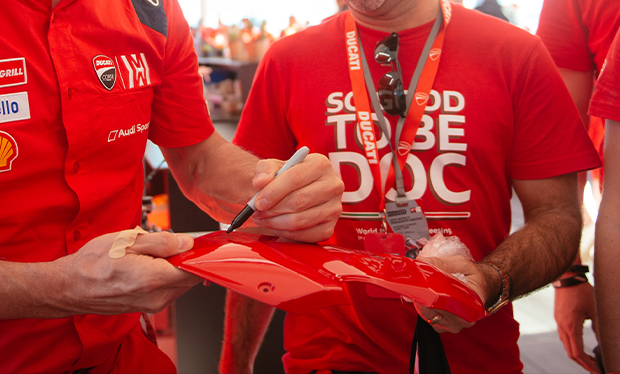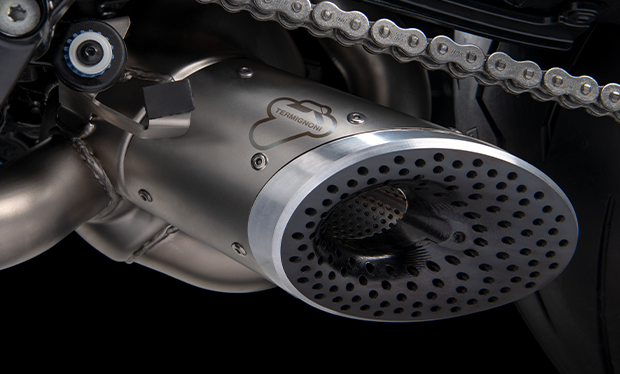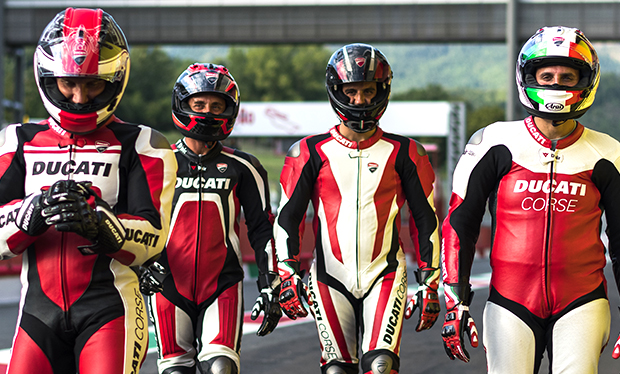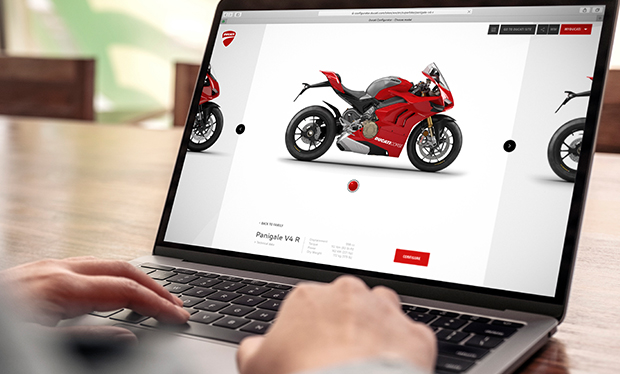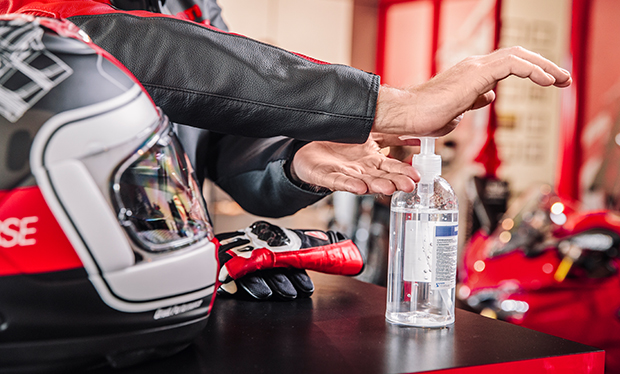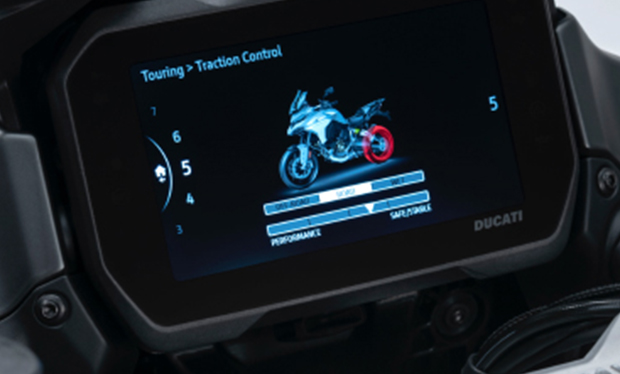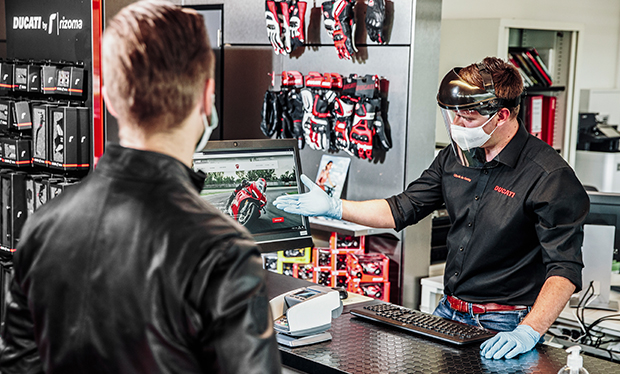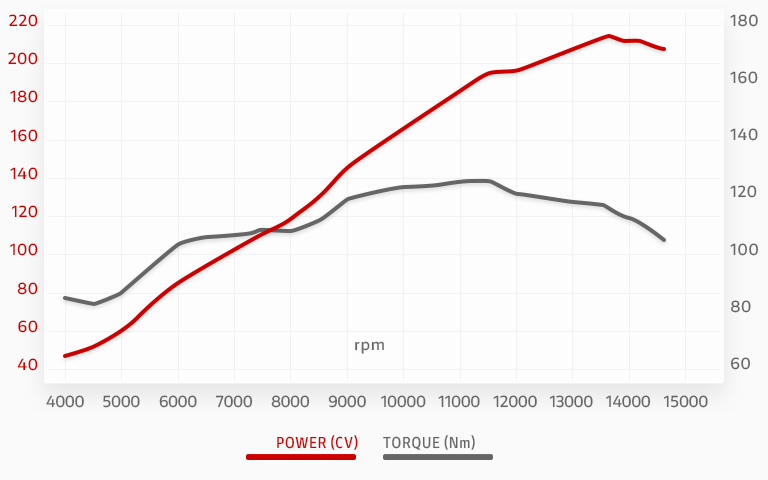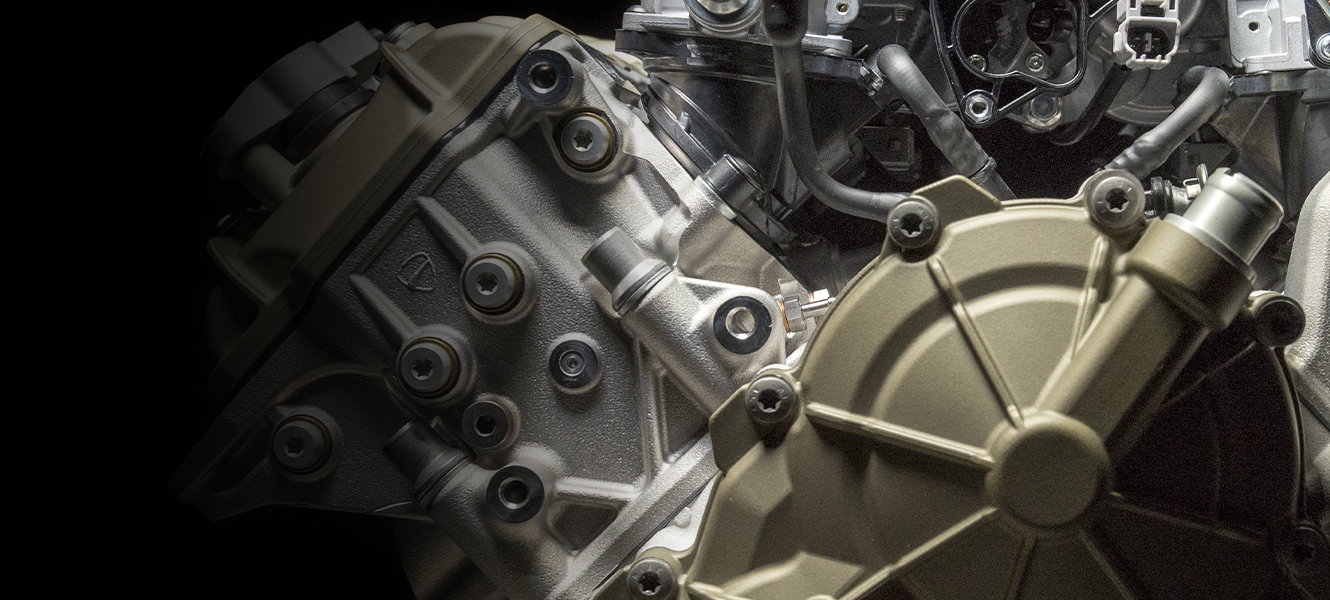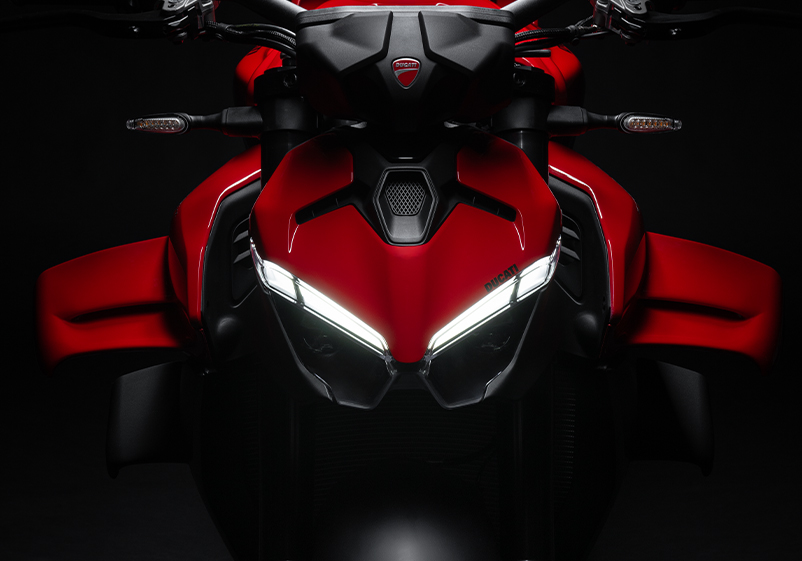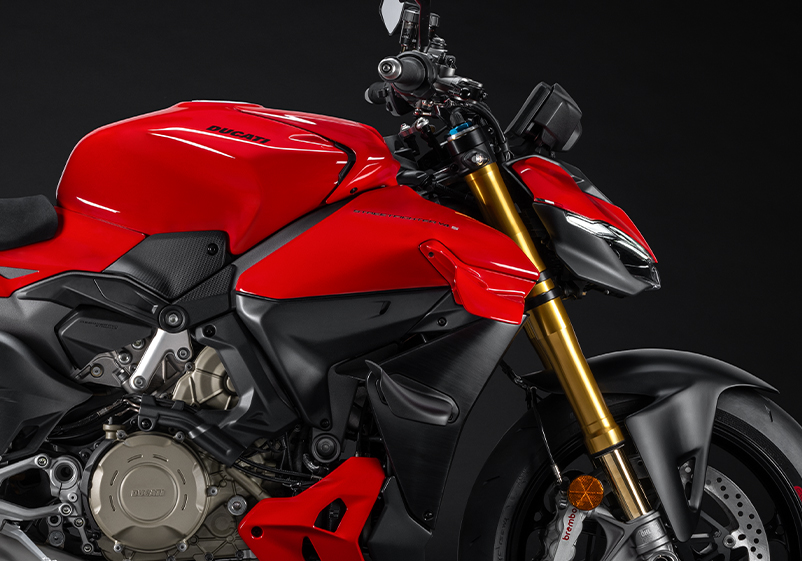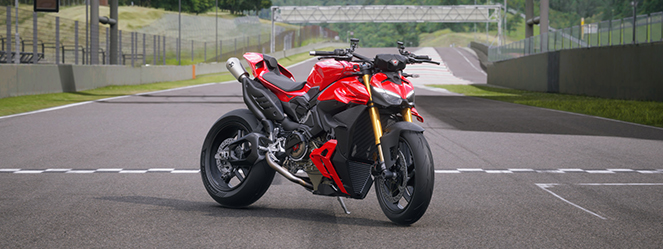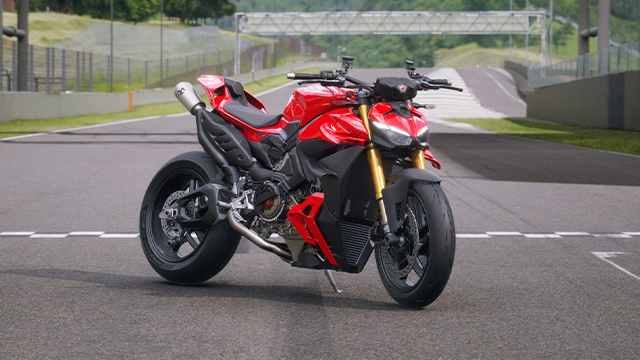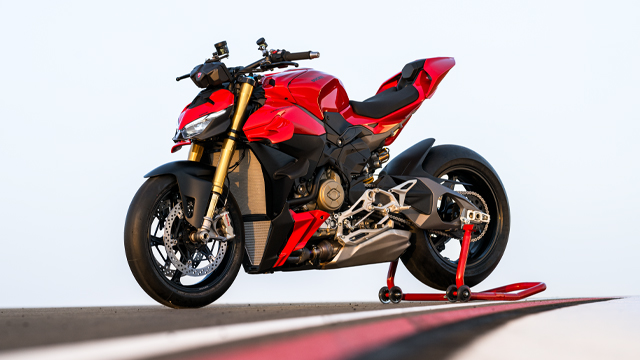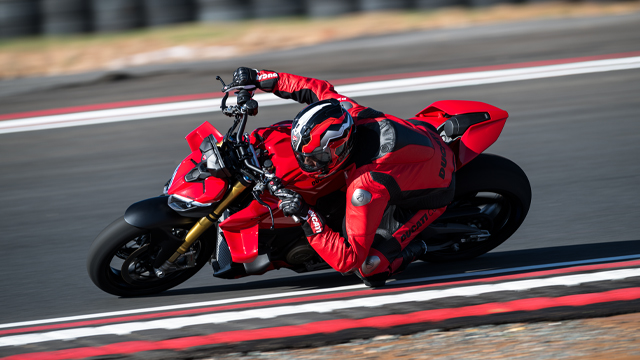| Engine |
|
|
| Type |
Desmosedici Stradale 90° V4, counter-rotating
crankshaft, Desmodromic timing, 4 valves per
cylinder, liquid-cooled |
Desmosedici Stradale 90° V4, counter-rotating
crankshaft, Desmodromic timing, 4 valves per
cylinder, liquid-cooled |
| Displacement |
1,103 cc |
1,103 cc |
| Bore x Stroke |
81 x 53.5 mm |
81 x 53.5 mm |
| Compression Ratio |
14.0:1 |
14.0:1 |
| Power |
205 hp kW (150.7) @ 12,650 rpm |
205 hp (150.7 kW) @ 12,650 rpm |
| Torque |
88.3 lb-ft (119.7 Nm) @ 11,500 rpm |
88.3 lb-ft (119.7 Nm) @ 11,500 rpm |
| Fuel Injection |
Electronic fuel injection system. Twin injectors per cylinder. Full ride-by-wire elliptical throttle bodies. Variable length intake system |
Electronic fuel injection system. Twin injectors per cylinder. Full ride-by-wire elliptical throttle bodies. Variable length intake system |
| Exhaust |
4-2-1-2 system |
4-2-1-2 system |
| Transmission |
|
|
| Gearbox |
6 speed with Ducati Quick Shift (DQS) up/down 2.0 |
6 speed with Ducati Quick Shift (DQS) up/down 2.0 |
| Primary drive |
Straight cut gears; Ratio 1.80:1 |
Straight cut gears; Ratio 1.80:1 |
| Ratio |
1=38/14 2=36/17 3=33/19 4=32/21 5=30/22 6=30/24 |
1=38/14 2=36/17 3=33/19 4=32/21 5=30/22 6=30/24 |
| Final drive |
Chain 520; Front sprocket 15; Rear sprocket 42 |
Chain 520; Front sprocket 15; Rear sprocket 42 |
| Clutch |
Hydraulically controlled slipper and self-servo wet multiplate clutch. Self bleeding master cylinder. |
Hydraulically controlled slipper and self-servo wet multiplate clutch. Self bleeding master cylinder. |
| Chassis |
|
|
| Frame |
Aluminum alloy "Front Frame" with optimized stiffnesses |
Aluminum alloy "Front Frame" with optimized stiffnesses |
| Front suspension |
Öhlins NIX30 (SV) S-EC 3.0 43 mm fully adjustable fork with TiN treatment. Electronic compression and rebound damping adjustment with Öhlins Smart EC 3.0 event-based mode |
Fully adjustable Showa BPF fork, 43 mm chromed inner tubes |
| Front Wheel |
5-spokes forged aluminum alloy 3.50" x 17" |
5-spokes light alloy 3.50" x 17" |
| Front Tire |
Pirelli Diablo Rosso IV Corsa 120/70 ZR17 |
Pirelli Diablo Rosso IV Corsa 120/70 ZR17 |
| Rear suspension |
Fully adjustable Öhlins TTX36 (SV) S-EC 3.0 unit. Electronic compression and rebound damping adjustment with Öhlins Smart EC 3.0 event-based mode. Aluminum Hollow Symmetrical Swingarm |
Fully adjustable Sachs unit. Aluminum Hollow Symmetrical Swingarm |
| Rear Wheel |
5-spokes forged aluminum alloy 6.00" x 17" |
5-spokes light alloy 6.00” x 17” |
| Rear Tire |
Pirelli Diablo Rosso IV Corsa 200/60 ZR17 |
Pirelli Diablo Rosso IV Corsa 200/60 ZR17 |
| Wheel Travel (Front/Rear) |
125 mm (4.9 in) - 130 mm (5.1 in) |
125 mm (4.9 in) - 130 mm (5.1 in) |
| Front Brake |
2 x 330 mm semi-floating discs, radially mounted Brembo Monobloc Hypure® 4-piston calipers with Race eCBS. Self bleeding master cylinder. |
2 x 330 mm semi-floating discs, radially mounted Brembo Monobloc Hypure® 4-piston calipers with Race eCBS. Self bleeding master cylinder. |
| Rear Brake |
245 mm disc, 2-piston caliper with Race eCBS |
245 mm disc, 2-piston caliper with Race eCBS |
| Instrumentation |
Digital unit with 6.9" TFT display and Optical Bonding, 1,280 x 480 px resolution, 8:3 aspect ratio |
Digital unit with 6.9" TFT display and Optical Bonding, 1,280 x 480 px resolution, 8:3 aspect ratio |
| Dimensions and Weights |
|
|
| Wet weight no fuel |
417 lb (189 kg) |
421 lb (191 kg) |
| Seat Height |
33.3 in (845 mm) |
33.3 in (845 mm) |
| Wheelbase |
59 in (1,496 mm) |
59 in (1,496 mm) |
| Rake |
24.5° |
24.5° |
| Trail |
99 mm (3.9) |
99 mm (3.9) |
| Fuel Tank Capacity |
4.2 US-gallons (16 l) |
4.2 US-gallons (16 l) |
| Number of Seats |
Single seat
Two seats, if passenger seat kit accessory is mounted |
Single seat
Two seats, if passenger seat kit accessory is mounted |
| Equipment |
|
|
| Safety Equipment |
Riding Modes, Power Modes, Race eCBS, Ducati Vehicle Observer (DVO), Ducati Traction Control (DTC) DVO, Ducati Wheelie Control (DWC) DVO, Ducati Slide Control (DSC), Engine Brake Control (EBC) |
Riding Modes, Power Modes, Race eCBS, Ducati Vehicle Observer (DVO), Ducati Traction Control (DTC) DVO, Ducati Wheelie Control (DWC) DVO, Ducati Slide Control (DSC), Engine Brake Control (EBC) |
| Standard Equipment |
Ducati Power Launch (DPL) DVO, Ducati Quick Shift (DQS) up/down 2.0, Full LED headlights with Daytime Running Light (DRL)*, Ducati Electronic Suspension (DES) 3.0 with Öhlins Smart EC 3.0, Öhlins steering damper, Lithium-ion battery, Quick adjustment buttons, Pit Limiter, Auto-off indicators, Forged aluminum wheels, Coming Home
|
Ducati Power Launch (DPL) DVO, Ducati Quick Shift (DQS) up/down 2.0, Full LED headlights with Daytime Running Light (DRL)*, Sachs steering damper, Quick adjustment buttons, Pit Limiter, Auto-off indicators, Coming Home
|
| Ready for |
Ducati Data Logger (DDL), Cruise Control, Tire Pressure Monitoring System (TPMS), USB port*, Ducati Multimedia System (DMS)*, "Turn By Turn" navigator* |
Ducati Data Logger (DDL), Cruise Control, Tire Pressure Monitoring System (TPMS), USB port*, Ducati Multimedia System (DMS)*, "Turn By Turn" navigator* |
| Warranty |
|
|
| Warranty |
24 months unlimited mileage |
24 months unlimited mileage |
| Annual Service |
12 months |
12 months |
| Oil Service |
7,500 miles (12,000 km) / 24 months |
7,500 miles (12,000 km) / 12 months |
| Valve Clearance Check |
15,000 miles (24,000 km) |
15,000 miles (24,000 km) |
| Emissions and Consumption |
|
|
| Notes |
*: Please refer to your local Dealer for availability
Bike specifications and equipment may vary from market to market. Please refer to your local dealer for further information |
*: Please refer to your local Dealer for availability
Bike specifications and equipment may vary from market to market. Please refer to your local dealer for further information |
 United States
United States
 DesertX
DesertX
 Diavel
Diavel
 XDiavel
XDiavel Hypermotard
Hypermotard Monster
Monster
 Streetfighter
Streetfighter Multistrada
Multistrada Panigale
Panigale Off Road
Off Road Limited Series
Limited Series

 E-BIKE
E-BIKE


